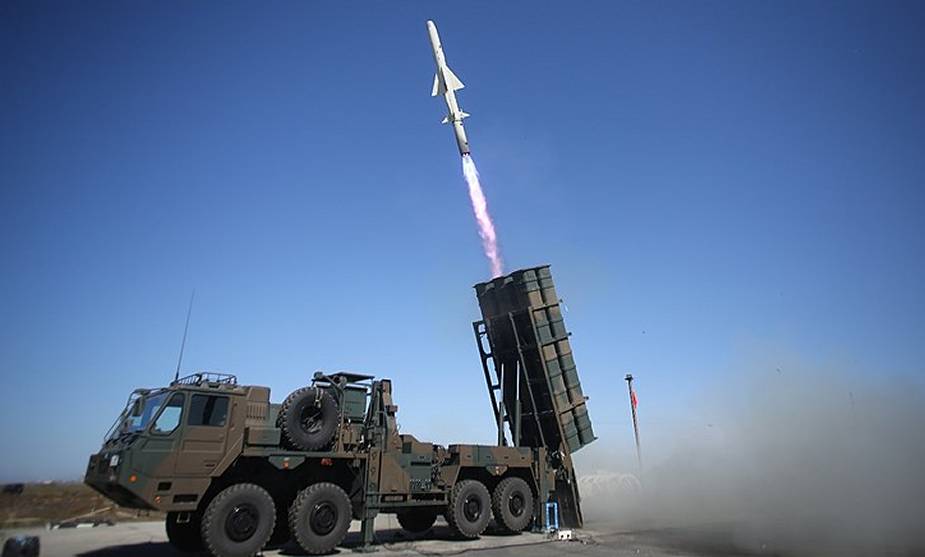Breaking news
Japan to upgrade Type 12 anti-ship missiles for more efficiency and protection.
Tokyo is determined to rebalance the regional threat environment by improving the reach of its Type 12 anti-ship missiles as China, Japan's historical rival, has taken the lead in developing far-reaching, land-based anti-ship and ballistic missiles.
Follow Army Recognition on Google News at this link

JSDF Type 12 anti-ship missile (Picture source: Wikipedia)
The Type 12 Surface-to-Ship Missile is a truck-mounted anti-ship missile developed by Mitsubishi Heavy Industries in 2012. It is an upgrade of Type 88 Surface-to-Ship Missile. Type 12 features INS with mid-course GPS guidance and better precision due to enhanced Terrain Contour Matching and target discrimination capabilities. The weapon is networked, where initial and mid-course targeting can be provided by other platforms, and also boasts shorter reload times, reduced lifecycle costs, and a range of 124 mi (108 nmi; 200 km). The missile shares the same Ka-band Active Electronic Scanned Array(AESA) radar seeker with the Japanese BVRAAM missile, AAM-4B.
The ship-launched derivative of Type 12, designated as Type 17 (SSM-2) missile has been put into service and it is to start deploying from Maya-class destroyer. The range has doubled to 400 kilometers and is also planning to re-apply for the improved version of the surface-to-ship system and the air-launched variant for the P-1 patrol aircraft. The missile skims approximately 20 feet above the sea, stimulating a high-resolution active digitally scanned array seeker coming from the AA-4B air-to-air missile, which can identify if a ship is a suitable target and home in for the kill.
The Japanese MoD approved the development of an improved version of the Type 12 SSM on December 18, 2020 by the Cabinet. According to Japanese newspapers, the range will be extended from 200 km to 900 km, with a future target of 1,500 km. It will have a stealthy shape to reduce RCS, as well as high mobility to prevent interception from the enemy. It can attack not only naval vessels but also ground targets. The MoD intends to launch the improved Type 12 SSM not only from the ground, but also from naval vessels and aircraft.
A Type 12 battery usually comprises four ammunition carriers, four launcher vehicles, two radar vehicles, and two more trucks with communication systems and fire control. Four batteries are presently concentrated at the Kengun Kumamoto, Japan's 5th Surface-to-Ship Missle Regiment. A pair of additional batteries, with a third one arriving soon, are stationed at Amami Oshima, Ishigaki, and ultimately, Miyako, Islands. Each Type 12 launcher carries six missiles that weigh 1,500 pounds that are cruising towards a targeted vessel's position through a combination of GPS, inertia, and terrain-contour mapping for navigation.
As reported by Marie Morales in The Science Times, Japanese warships and airplanes already utilized a variant of this missile, also known as Type 17, with double the range at 250 miles. However, the JGSDF plans to leapfrog such a capability with the improved Type 12-Kai model, which enhances a range of 560 miles. Type 17 is scheduled for completion of its development by 2025. Furth upgrading to more than 900-mile range is believed probable. That would approximately match the range of the DF-21D anti-ship ballistic missile. The Type 12 Kai has been improved for a decreased radar cross-section to alleviate the risk of being detected at long distances. It will possibly be programmed to dive to low altitude to the flight's final stage.
Type 12 is anticipated for deployment on Japan's F-15-derived Mitsubishi F-2 fighters. An air-launched Type 12 could feature a greater range due to starting with a speed at altitude boost and could approach target as well, from less foreseeable vectors. The Japan Maritime Self-Defense Force P-1 maritime patrol planes reportedly can carry eight Type 12 missiles of the present model.

























